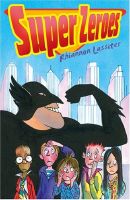I was prompted to write about negative reviews by this post on Publishers Weekly on The Value of Negative Reviews. The PW post was in turn inspired by a blog post by Sarah Rees Brennan and comments on that blog post about the value of positive vs negative reviews.
Someone said that they didn’t read all positive review sites which is interesting to me because I have done my most reviwing for Armadillo which had a policy of not publishing reviews that panned a book. By and large that rule has held true for me in reviewing. On my blog and in trade magazines you won’t find me reviewing a book negatively. I have in the past reviewed books negatively: in my brief stint as a Guardian teenage reviewer and in online reviews for a BBS I ran for recommended reading. Nowadays I feel uncomfortable about putting bad reviews in the public eye.
I may privately wax lyrical with my friends about hated books. Sometimes I need to vent about a book and my friends get the outpouring of bile about a title I haven’t enjoyed. Like Sarah “I can act out, scene by hateful scene, some of these books.” Our book group has a good balance of liked to hated books and we’ve had several books which we’ve spent a pleasant evening tearing apart. When I review publically, I review books I like.
Even when I complain about an element of a book this is within the context of me contining to read the books. Sometimes I forget to take this into account when criticising long standing series writers. As a collector of writers I can get disappointed with someone’s current strand of writing, like their work generally but not specifically. It can be hard in the fervour of hate for a book to remember that you were gripped while reading it and enjoyed a great deal of it.
I’m suddenly inspired to give negative reviews and to explain the ‘why’ of the negative for books I own and intend to keep. For example:
- I buy all Steven Brust’s Dragaera books but not in hardback anymore. I love the world and the character and I want Brust to finish the 23? book sequence but I feel they’ve bogged down now and lack the playful stylish inventiveness of the earlier books in the series
- Did Lois McMaster Bujold hit the ultimate Vorkosigan novel in Memory? Can any book in that series top that masterful work? I end up being disappointed in the novels since that one just because I enjoy them so much and I want so much of them. Is this fair criticism? (The fear of every artist has got to be that you have already completed your best work eg Michael Jackson and Thriller)
- Diana Wynne Jones will always be on my top ten, Margaret Mahy likewise. But it’s been a while since either of them wrote fiction that influenced me as much as their earlier work. Is that because I’m no longer a teenager?
- Spider Robinson seems to have turned into Robert Heinlein. The evolution of Callaghans Bar has moved the conceit so far away from the things I liked about it – and yet I continue to buy the series. I like the character development but I hate who the characters have developed into.
- John Scalzi is experimenting with different POVs in pre-existing story/universe, I want him to get on and write new work. Tie-in novels are not as good as original ones they’re merchandising, not fiction. Yes, I know this is harsh.
- I adore Gwyneth Jones’ Aleutian series and Ursula Le Guin’s Hainish series. I resent it when they write other books. Yes, I know this isn’t fair.
- David Weber, Peter F Hamilton and George R R Martin and other authors create these huge worlds and universes with so many interlinked plotlines and character proliferation and I wonder if those series will ever be completed, like Robert Jordan and The Wheel of Time. I wish they’d write shorter 3, 5 or even 10 book series which stand a chance of being completed. Oh, and PS: if you’re going to have over-titles and individual titles please keep them consistent: Book 1, Book 2 and Book3a and Book3b is aan unhelpful way to title books of the same length.
Yes, I feel negatively about books. These are my kinder criticisms. But we criticise because we care – I think that’s something to remember.
 Psychologist Sharon Lamb’s address to the 118th Annual Convention of the American Psychological Association was heavily syndicated across the internet last week. The essential details are here:
Psychologist Sharon Lamb’s address to the 118th Annual Convention of the American Psychological Association was heavily syndicated across the internet last week. The essential details are here: